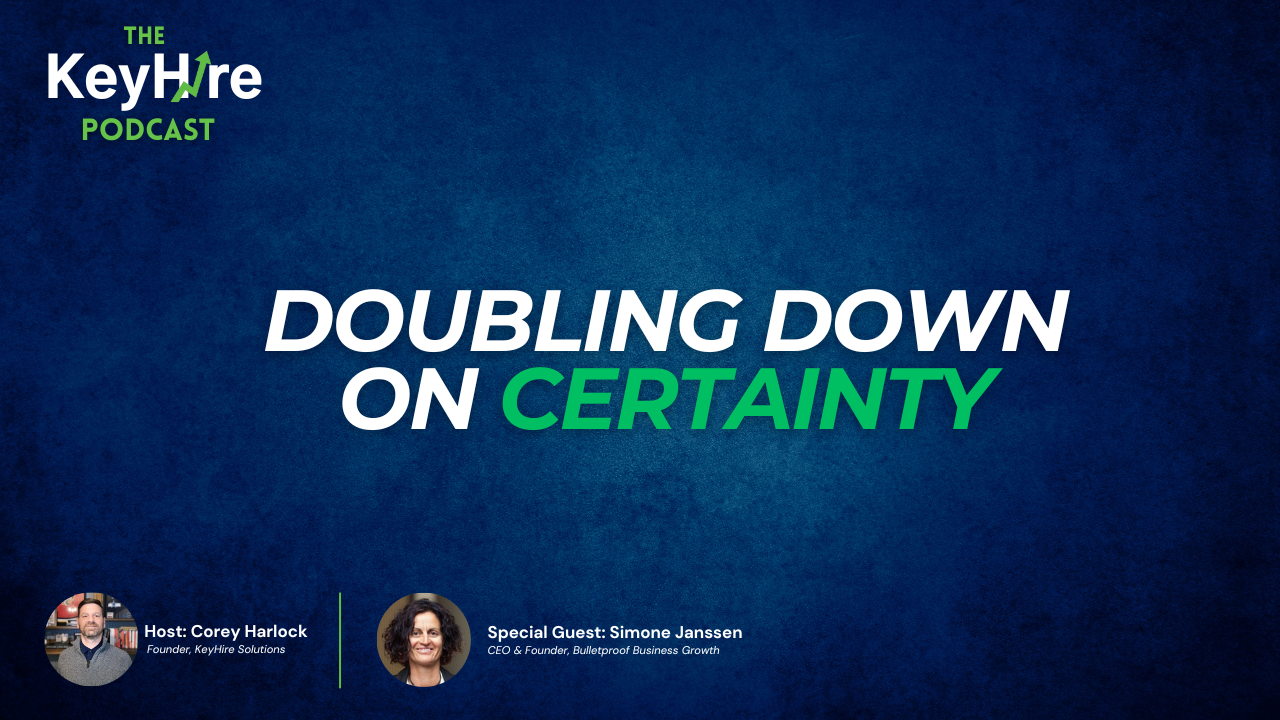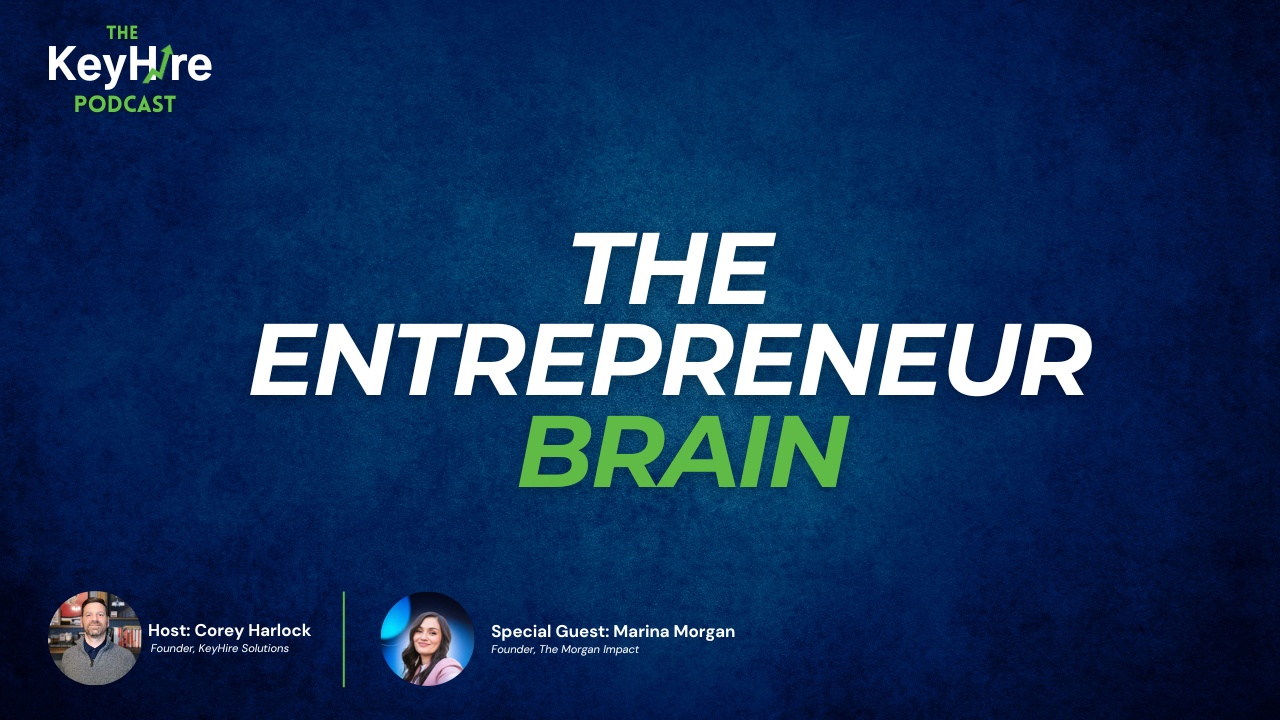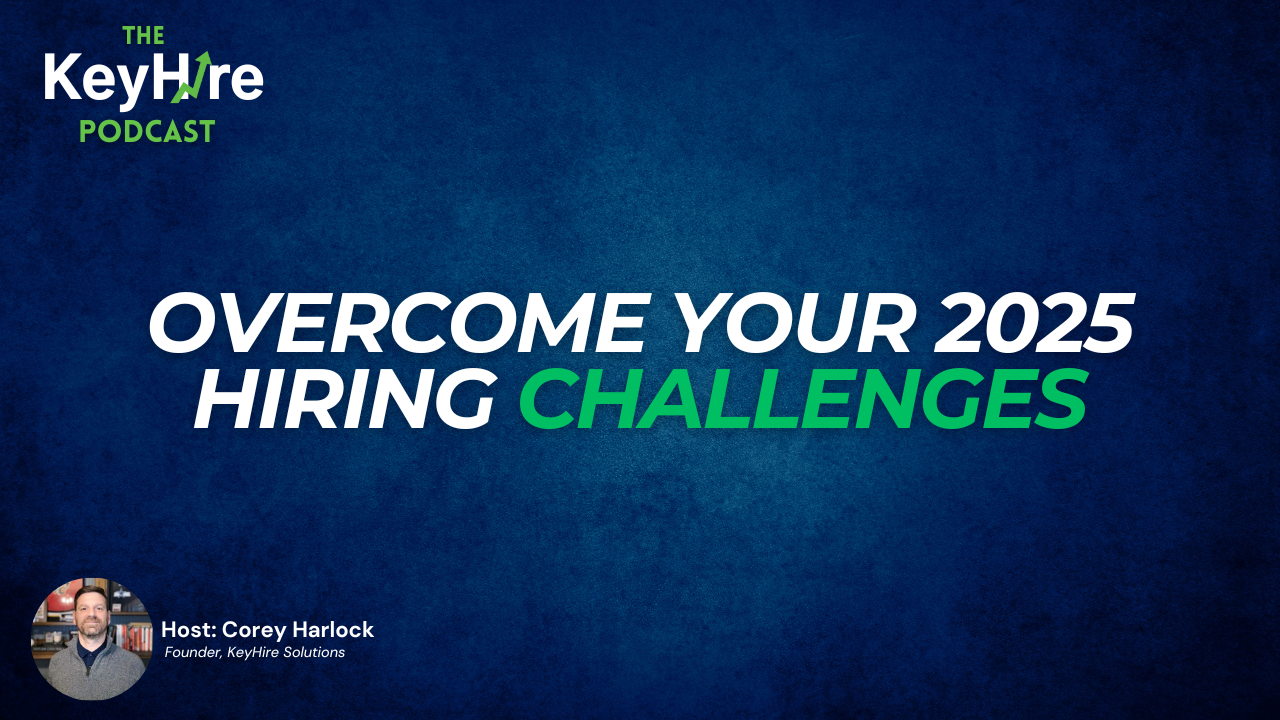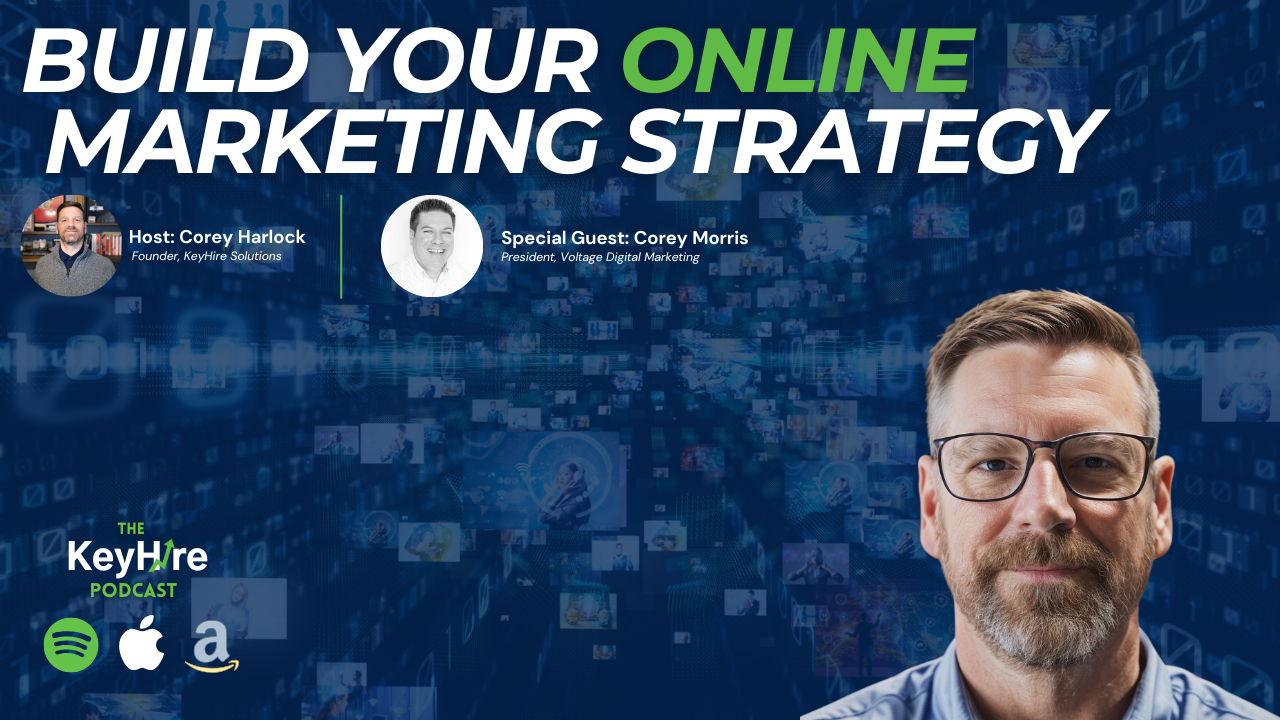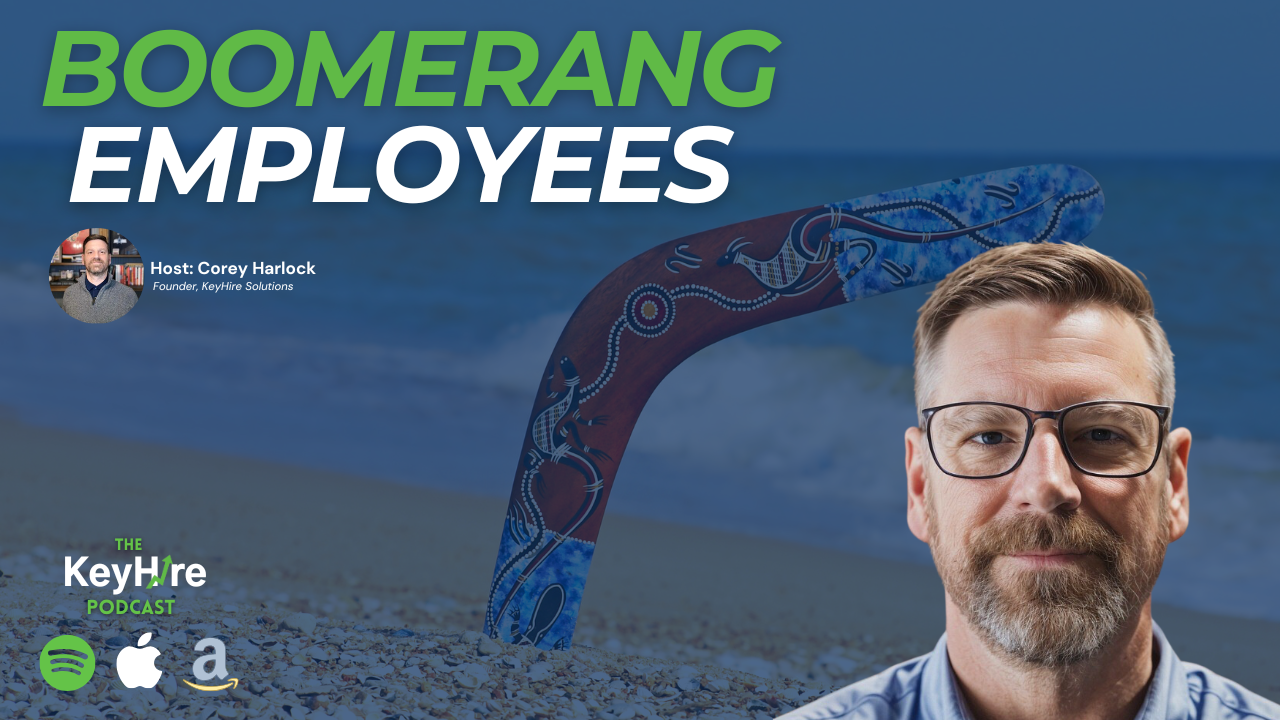From Startup Squad to Scale-Ready Leaders: Can your leadership team take you to the next level?

Every entrepreneur experiences the painful realization that those who contributed to building the company may not be equipped to elevate it further. This acknowledgment is one of the toughest realities in business growth, yet it's essential to identify when your leadership team has hit its limit to ensure ongoing success.
In a recent episode of the KeyHire Small Business Podcast, host Corey Harlock from KeyHire Solutions sat down with Neil Katz, CEO and founder of Exceptional HR Solutions, to tackle this challenging topic. Their conversation revealed essential insights for business owners navigating the complex world of team assessment and strategic hiring.
The Reality of Scaling a Small Business Leadership
The harsh reality is that what got you here won't get you there. As Neil Katz explains, "When you have five or 10 employees, that same leader in many cases does not have the capability, skills, or background to get you to 100 employees or 1,000 employees or from a million in revenue to 50 million."
This isn't a criticism of your current team; it's just the reality of business growth. The skills required to manage a $2 million operation differ dramatically from those needed to run a $20 million enterprise. Your neighbor's cousin, who started with you in the garage, may have given everything they had, but their experience ceiling might not match your business's trajectory.
Companies usually transform their entire organization—people, structures, processes, and systems—each time they triple in size. Some exceptional individuals can scale through multiple growth phases, but they're rare. Most leaders hit their natural ceiling, and recognizing this early can save you months of frustration and lost revenue.
Overcoming Hiring Challenges: Experience vs. Potential
A major hiring challenge for small business owners is the ongoing discussion about whether to hire based on potential or experience. KeyHire Solutions philosophy breaks this down simply: you're either hiring for potential or experience, each with distinct ROI timelines.
Potential comes at a lower upfront cost but requires 12-24 months before you see returns. You'll need comprehensive training programs, mentoring resources, and significant time investment. Experience costs more initially but delivers almost immediate ROI.
Mistakes are made when companies invest in potential, anticipating the ROI that comes with experience. This leads to a revolving door of letdown hires, as new team members may begin with enthusiasm but soon fall short of expectations.
For companies under 50 employees, Neil strongly advises prioritizing experienced talent: "Do we have bandwidth, the resources, and the capacity to train this individual that's 12, 24, 36 months behind where I need them to be? You need to focus on your clients, your investors, your strategy, and the financial components of your business."
How to Scale a Business: Strategic Talent Acquisition Approach
The Investment Mindset
Smart business owners understand there's ROI on talent. When you buy experience in the open market, you're making a strategic investment in your company's future. Yes, it's more expensive upfront, but the alternative – hoping untested potential will develop quickly enough to meet urgent business needs – often costs more in lost opportunities and delayed growth.
Beyond the Job Description
Effective talent acquisition involves more than just aligning skills with job requirements. It's essential to find candidates whose soft skills, leadership abilities, and core values resonate with your mission. Naturally, they should meet the standard criteria, possessing the necessary competencies, skills, and background. However, consider these expanded factors to ensure they have the qualities that will align with your business and team.
The Three-Option Framework
When transitioning existing team members, Corey recommends offering three clear paths:
- Mentorship and development under new leadership
- Lateral movement to better-suited departments
- Graceful exit with full support and references
While most people initially choose options one or two, the reality is that many eventually move to option three as they struggle with the transition.
Avoiding Common Leadership Assessment Mistakes
- Over-Elevating Too Quickly: The biggest error is promoting people multiple title levels beyond their capabilities. That reliable machine operator who became a supervisor shouldn't automatically become the Director of Operations without proper development. Establish clear competency levels and KPIs before promoting any individual.
- Letting Subjectivity Rule Decisions: Personal relationships cloud judgment. Neil emphasizes the importance of objective evaluation: "Take the names out. If you were just evaluating the roles without a name, evaluate and ask yourself, is that role achieving the functions I need today and at least the next 24 months ahead?"
- Equity Complications: Offering ownership stakes to early employees creates additional complexity when changes become necessary. Plan exit strategies for equity holders well in advance, before you need them.
- Ignoring Red Flags: Most business owners admit they've known about performance issues for months or years before taking action. Trust your instincts and address concerns promptly rather than hoping they'll resolve naturally.
- Waiting Until Crisis Mode Don't wait until you desperately need new leadership to start looking. Network continuously and build relationships with potential future team members well before you need them.
Taking Action: Your Next Steps
Conduct an Objective Team Assessment
- Remove names and evaluate each role based purely on performance metrics
- Assess whether current capabilities match 24-month business projections
- Identify skill gaps that could constrain growth
Define Your Growth Requirements
- Map out the leadership capabilities needed for your next revenue milestone
- Determine which roles need immediate attention versus future planning
- Create clear job specifications that go beyond basic qualifications
Build Your Pipeline
- Start networking now for future leadership needs
- Connect with industry professionals who could join your team in 1-3 years
- Maintain relationships even when you're not actively hiring
Develop Transition Plans
- Create clear communication strategies for team changes
- Prepare multiple scenarios for existing team members
- Document processes to minimize disruption during transitions
Invest in Current Talent Where Appropriate
- Consider executive coaching for promising leaders
- Provide targeted training for specific skill gaps
- Realign responsibilities to match individual strengths better
Key Takeaways
The journey from startup to a scaled business requires an honest assessment of your leadership team's capabilities. While it's emotionally challenging to recognize that loyal, hardworking team members may not be equipped for your company's next chapter, addressing these issues proactively prevents larger problems down the road.
Remember Corey's insight: "You can't run a $30 million a year business on a $2 million process." The same principle applies to people – you can't scale to $25 million with a leadership team built for $5 million operations.
Success in small business leadership development comes from balancing loyalty to existing team members with objective assessment of business needs. Sometimes the kindest thing you can do is help someone find a role where they can truly excel, even if that's not with your company.
The entrepreneurs who successfully navigate these challenges are those who act decisively while treating people with dignity throughout the process. They understand that building a scalable business sometimes requires difficult decisions, but they approach those decisions with clarity, compassion, and strategic thinking.
Listen to the full conversation with Neil Katz on this podcast episode for more detailed insights into building teams that can scale with your business.
Learn more about Neil Katz: https://www.exceptionalhrsolutions.com/
Check out our sponsor:
Career Spring, Careers launch here: https://careerspring.org/
Connect With Us:
KeyHire Solutions, Be Our Next Success Story: https://www.keyhire.solutions/testimonials
Contact Corey: corey@keyhire.solutions


